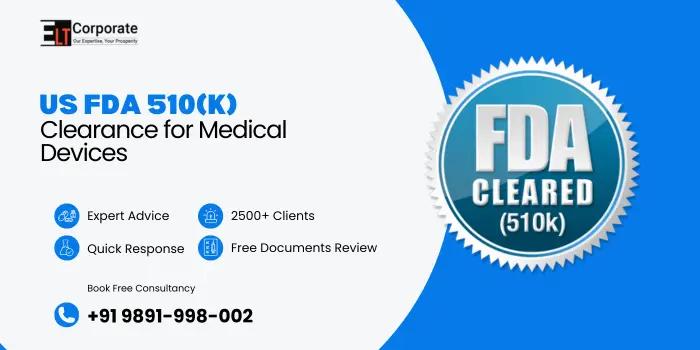If you wish to sell a medical device in the U.S., one of the most common routes is the US FDA 510(k) clearance pathway. In short: you submit a Premarket Notification (often called a “510(k)”) to the FDA, to show your device is “substantially equivalent” to another legally marketed device (called a predicate). Once cleared, you may market your device in the U.S. This guide walks you through the process clearly, step-by-step.
What is a US FDA 510(k)?
A US FDA 510(k) is a premarket notification submission to the FDA under Section 510(k) of the Federal Food, Drug, and Cosmetic Act.
You must submit a 510(k) if:
- Your device is a medical device (Class I, II or III) and is not exempt from 510(k) requirements.
- Your device is being introduced into commercial distribution in the U.S. for the first time (unless exempt).
- Your device is a modification of a legally marketed device and the change could significantly affect safety or effectiveness.
Note: Getting a 510(k) clearance is not the same as FDA approval — it means the device is cleared for marketing because it is substantially equivalent to a predicate device.
Step-by-Step Guide to US FDA 510(k) Clearance
Here is a walkthrough of the major steps from deciding eligibility to post-clearance obligations.
Step 1: Determine device classification and predicate device
- Find out your device’s classification (Class I, II, or III) via FDA’s device classification database.
- Check whether your device is exempt from 510(k). Many Class I devices are exempt; some Class II devices require 510(k).
- Identify a predicate device – a legally marketed device to which you will compare your device. It should have the same intended use and similar technological characteristics, or if different, not raise new safety/effectiveness questions.
Step 2: Establish a Quality Management System (QMS)
- Ensure your manufacturing facility, design controls, and processes meet FDA’s Quality System Regulation (QSR) under 21 CFR 820.
- U.S. Food and Drug Administration
- Maintain design history files, device master records, change-control processes, etc.
Step 3: Prepare the 510(k) submission content
Your 510(k) submission should include:
Indications for use statement (intended use, target population, anatomical site)
- Device description and technological characteristics (materials, energy source, design) vs. predicate
- Performance data (bench testing, biocompatibility, software verification, possibly clinical data)
- Substantial equivalence argument (how your device is equivalent to the predicate)
- Labelling, instructions for use, and packaging information.
Step 4: Submit the 510(k) to FDA
- Submit the 510(k) via FDA’s e-submission (or paper if applicable) per 21 CFR 807 Subpart E.
- FDA performs an “Acceptance Review” to check if the submission is complete. Then the “Substantive Review” begins.
Step 5: FDA review and clearance
- FDA aims to issue a decision within about 90 days for standard 510(k) submissions (though real timelines can vary).
- If the FDA finds the device substantially equivalent (SE), they issue a “clearance letter.” After that, you may market the device in the U.S.
- If not SE, you may need to submit a new 510(k), use the De Novo pathway, or submit a PMA.
Step 6: Post-clearance responsibilities
- Once cleared, you must register your establishment (if manufacturing) and list the device with FDA (through FURLS).
- Maintain the QMS, handle field corrections/recalls, comply with MDR (medical device reporting) obligations.
- If you make changes to the device design/materials/indications, determine if a new 510(k) is required.
Key Considerations & Practical Tips To Get US FDA 510(k) Clearance
- Substantial equivalence is critical: choosing the right predicate device saves time and avoids extra testing.
- Complete submissions reduce delays: missing data or weak justifications often prolong review or trigger refusal.
- Leverage guidance & device-specific templates: The FDA provides guidance for certain device types to help structure performance testing.
- Prepare for changes: Post-clearance modifications may trigger a new 510(k). Keep strong design controls and change records.
- Time & cost planning: Though some clearances happen in ~90 days, real timelines vary; allocate buffer and budget accordingly.
Does a 510(k) clearance mean FDA approves my device as safe and effective?
No – it means FDA determined your device is substantially equivalent to a predicate device already legally marketed. It is not the same as FDA approval.
If my device is Class I and exempt, do I still need to submit a 510(k)?
If it is exempt from 510(k) as per its regulation, then no, you may not need to submit a 510(k). Always check the classification and exemption list.


Comments are closed